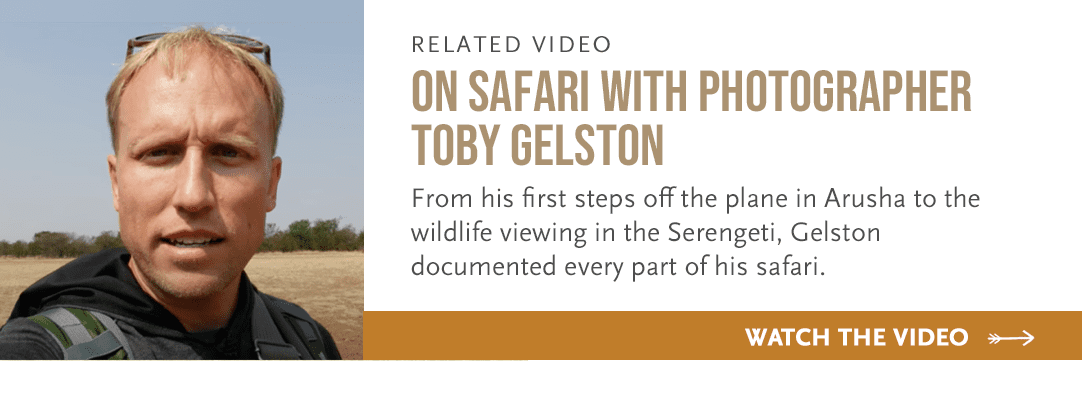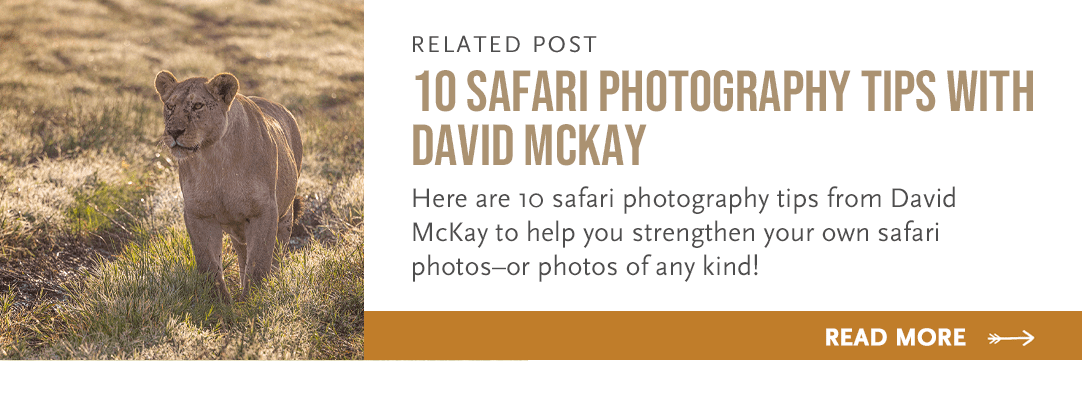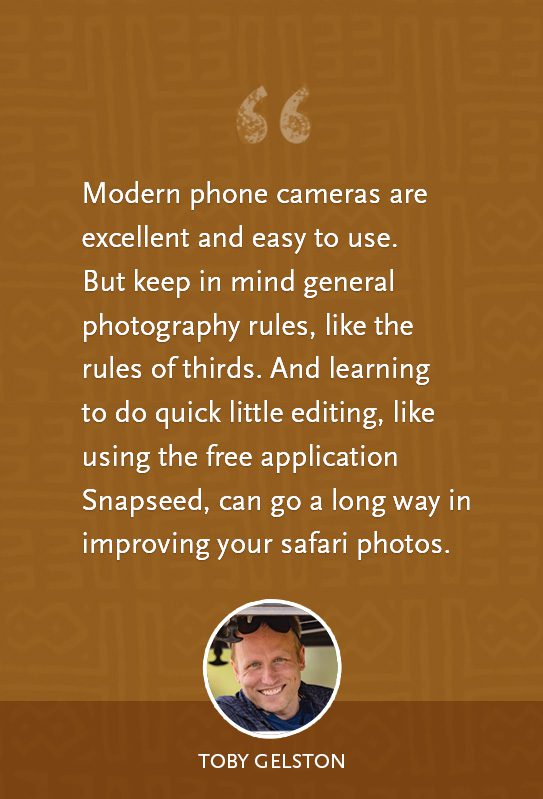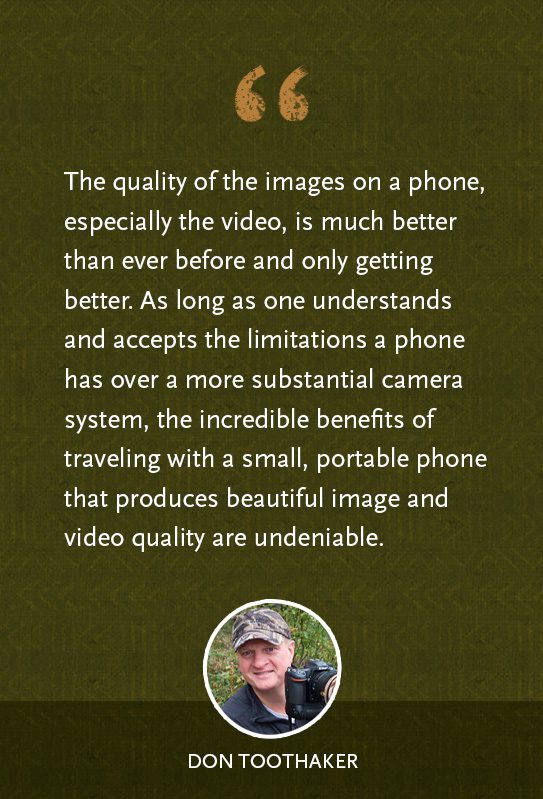Smartphone Photography on Safari: Pros and Cons
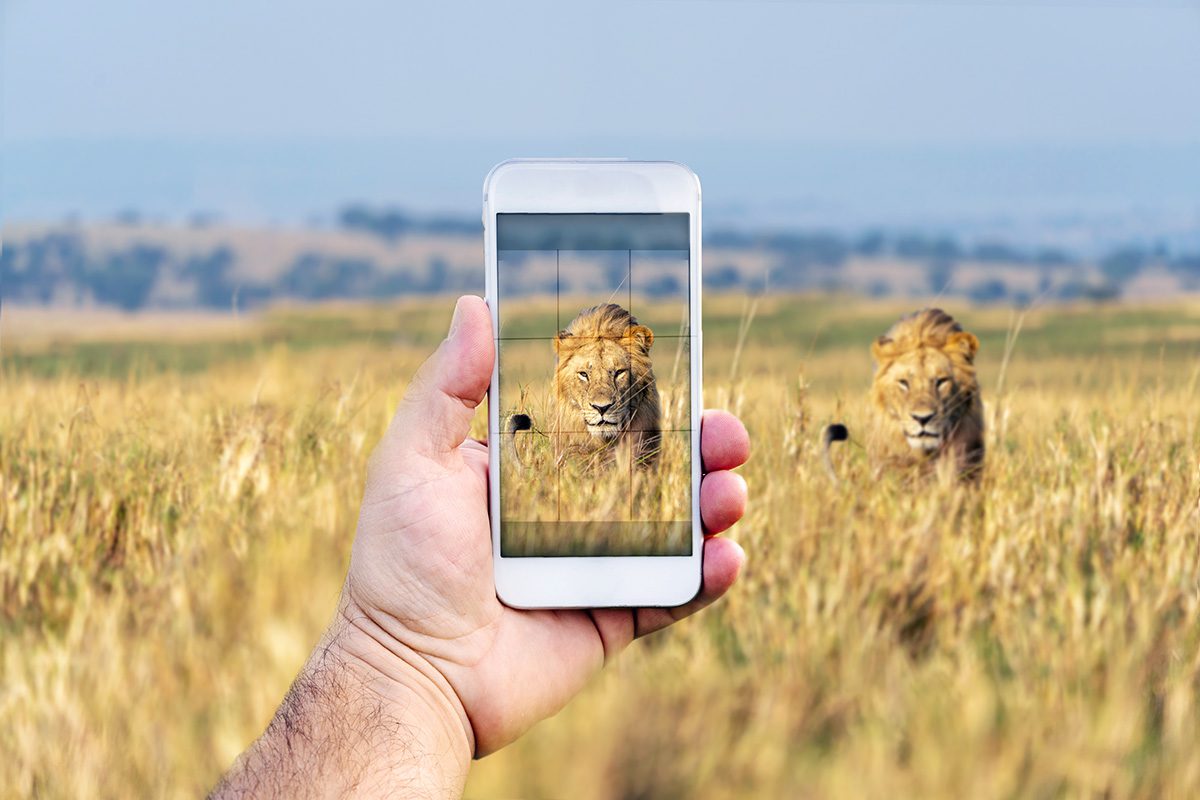
Once unthinkable, smartphone photography on safari is now relatively common. But what are the strengths and limitations of a smartphone camera? Can you go on safari with just your smartphone, or do you need to shell out for a digital camera too?
We let three safari photography experts weigh in on the topic: David McKay, Toby Gelston and Don Toothaker. We’ve collected their responses and laid out the pros and cons below.
 Ease of Use
Ease of Use
Because many travelers use their phone cameras in day-to-day life, using them on safari requires minimal training. Just point and shoot!
Ample phone memory means you can take gigabyte upon gigabyte of pictures and still have space. Plus, it’s easy to share your shots with family and friends on social media.
Overall, a phone’s small size and lightweight build make it the unparalleled choice for easy, accessible safari photography.
“The ease of using a phone, and the quickness with which you can pull it out of your pocket and shoot, is useful,” Toby Gelston said. “Combine that with excellent video and timelapse capabilities, and you have a pocket device capable of capturing some great content.”
 Video, Timelapse and Other Multimedia Capabilities
Video, Timelapse and Other Multimedia Capabilities
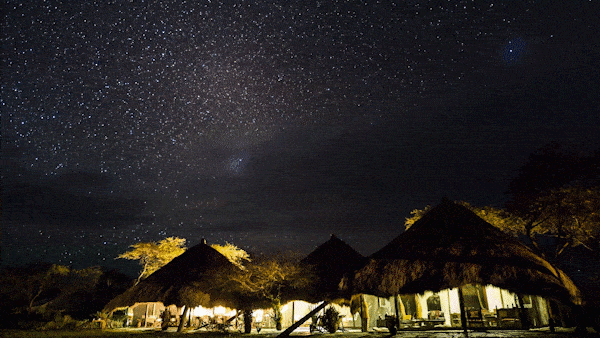
Phone cameras excel at video capture. In fact, they can handle a wide range of nonstandard photography well: slow motion, portrait and panoramic modes, among others.
“Some of the creative functions, such as panoramic and video, are quick, easy and very good,” Don Toothaker said. “With better phones these days that generate superb video, I intend to use mine for video on my next safari.”
At the time of writing, most smartphones can capture video at 4k; high-end smartphones can capture at 8k. That’s better than most entry-level DSLRs and even rivals top-end digital cameras.
 Close-Ups and Landscape Shots
Close-Ups and Landscape Shots
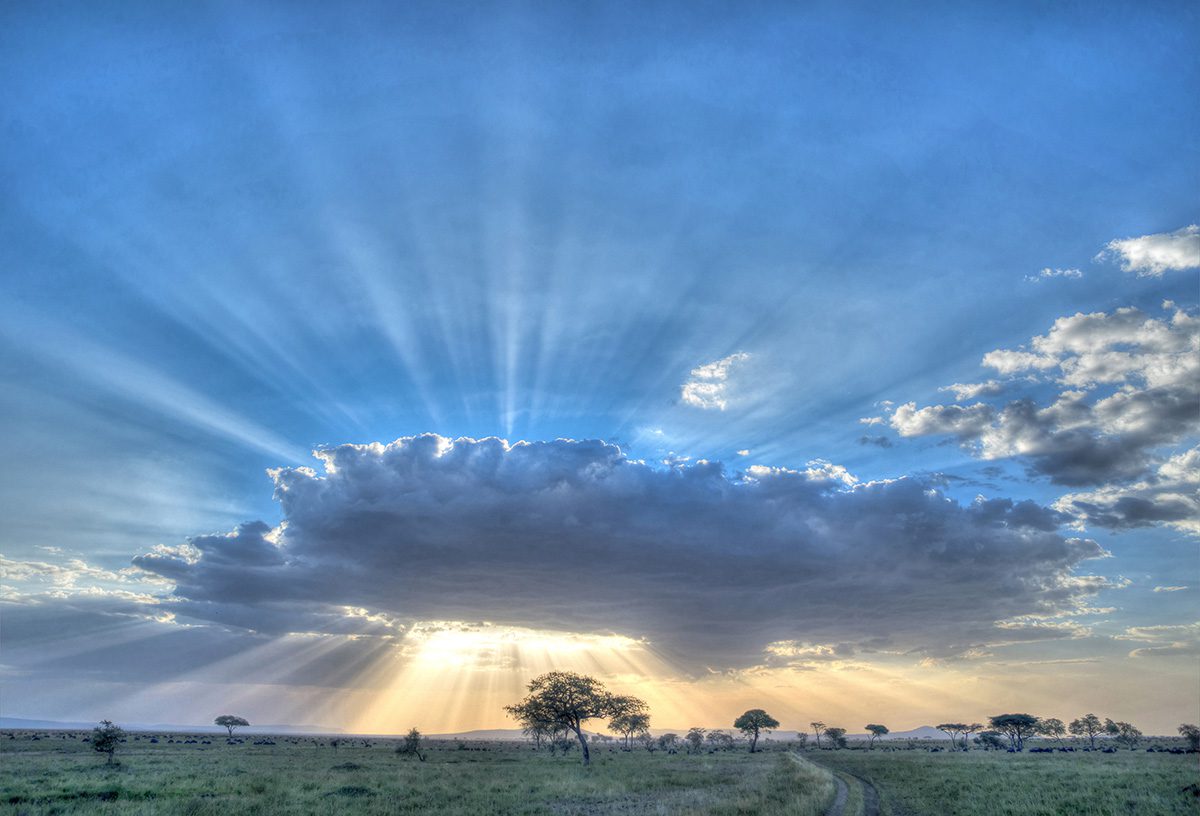
Phone cameras shoot best when the subject is nearby. Examples include close encounters with wildlife, scenery and Nyumba camp shots.
“Phones are excellent for capturing camp life, the accommodations, food and selfies with the awesome camp staff,” Toby Gelston said.
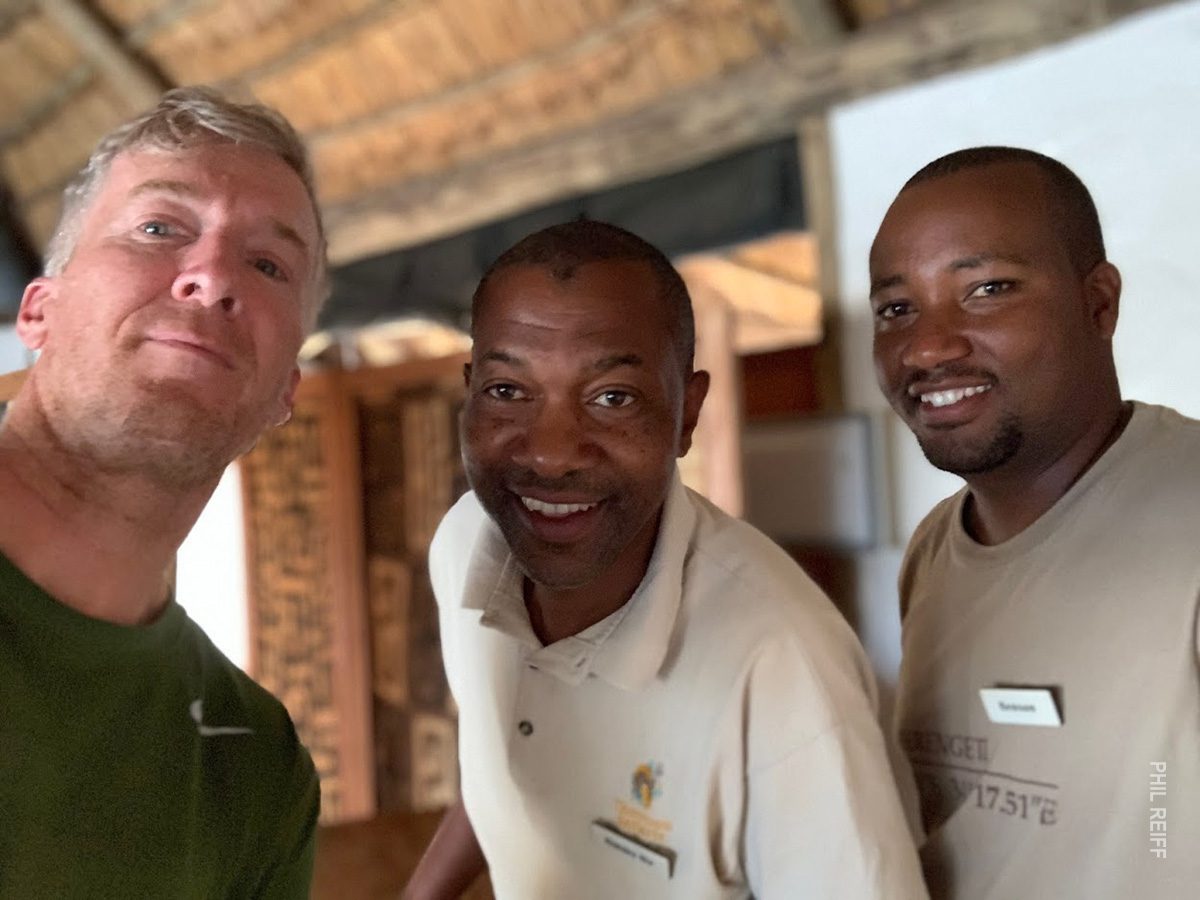 Thomson guest takes selfie with Serengeti Nyumba camp staffers
Thomson guest takes selfie with Serengeti Nyumba camp staffers
But don’t lose the forest for the acacia trees! Phone cameras also do well with landscapes.
Overall, the closer the subject or the broader the scenery, the better a phone camera will perform.
 Light Sensitivity
Light Sensitivity
On safari, phone cameras aren’t quite as powerful in low light situations. Take it during a Serengeti sunrise, or late in the evening, and you may get a grainy image.

 Printmaking
Printmaking
Want to hang that amazing safari phone photo on your wall? Give it a shot! You can make solid prints from camera phone images. It’s best to print small, up to 5″x7″ or 8″x10″. The print quality will suffer the larger you go.
For photographers serious about making high quality prints, phone cameras may not be enough.
“It’s not just about the pixels, it’s about the size of the camera’s sensor,” David McKay said. “Size does matter.”
 Zoom Limitations
Zoom Limitations
Animals and action at a distance will be tough to capture clearly on a phone camera. Phone cameras also struggle with high-speed action shots. Photos of predators chasing prey and river crossings risk coming out blurry.
“Although some very recent phone cameras offer impressive sounding telephoto capabilities, like 100x zoom, the reality is that the quality is far below what you would get with a dedicated telephoto lens on a full body camera,” Toby Gelston said.
David McKay recommends not using the zoom feature on your phone at all–do the zooming while editing!
“It’s actually better to shoot and crop later, than to zoom in using your fingers,” he said.
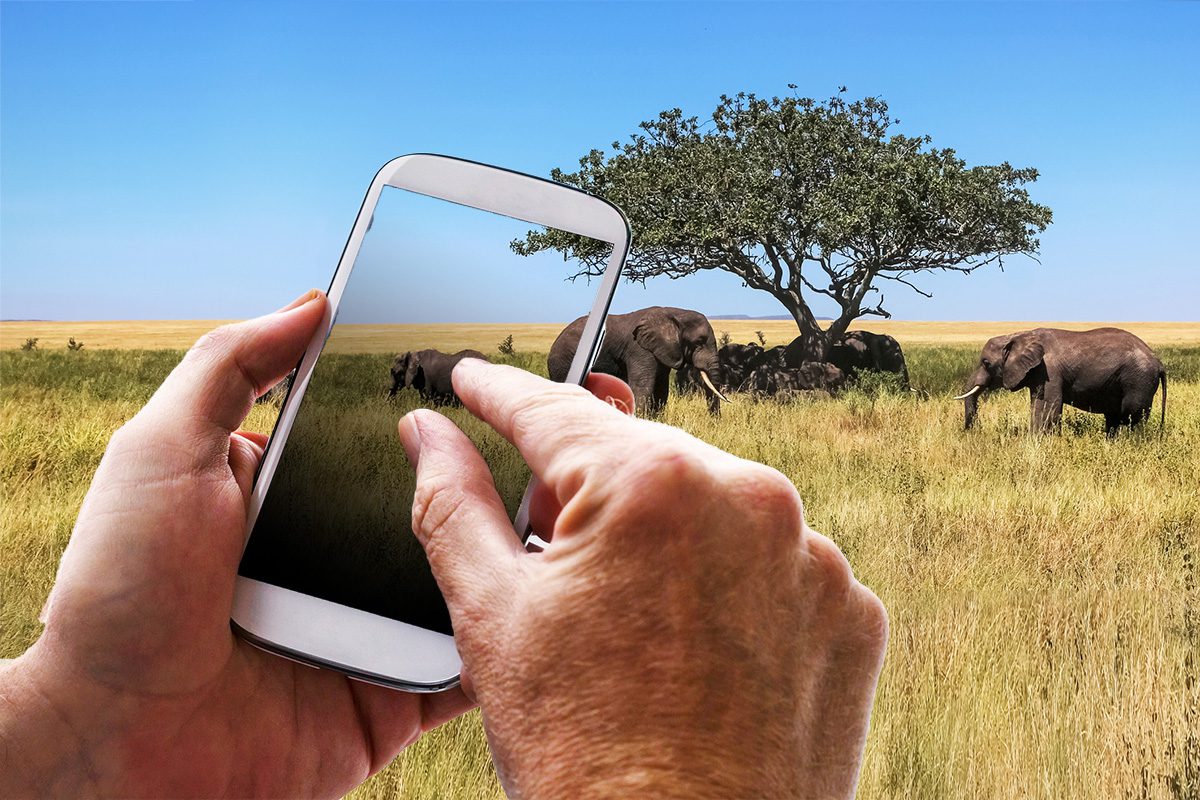 The pinch: What not to do with while shooting with your phone camera
The pinch: What not to do with while shooting with your phone camera
Gear Recommendations for Smartphone Photography on Safari
David McKay recommends a series of long lenses for camera phones. “If your phone is all you’re going to have, it’s worth having,” he said. “The macro lens accessories are fantastic.”
Toby Gelston recommends a small tripod to hold your camera phone. “Especially for timelapse videos, it can be important to keep your phone steady,” Toby Gelston said. “Or, you might have to get clever and lean your phone against the coffee pot set outside your tent every morning for a stable timelapse.”
 Camera accessories for your mobile phone: long lenses, gimbal, tripod
Camera accessories for your mobile phone: long lenses, gimbal, tripod
Toby also recommends a gimball for smooth, stable video capture–especially useful when shooting from a moving Land Rover.
Don Toothaker recommends a good microphone with a wind reducer for video capture. He also recommends accessories to expand your creative toolbox, such as zooming and macro lenses. Lastly, he suggests a pouch to secure your phone close at hand at all times.
Tips for Smartphone Photography on Safari
- Clean your lens often. Consider carrying a small lens cleaning cloth.
- Learn how to use your camera phone’s focus and exposure capabilities to maximize photo quality.
- Keep steady. For sharper photos, tuck in your elbows or lean against your safari vehicle’s pop-top roof.
- Use your camera’s grid overlay. This will help you better compose shots.
- Familiarize yourself with common photo composition concepts, such as the rule of thirds, leading lines, how to use lighting and so on. Even a basic understanding of these concepts will help your safari photos pop.
- Travel on photography-focused safaris to hone your craft, receive perks and work with photography professionals.

